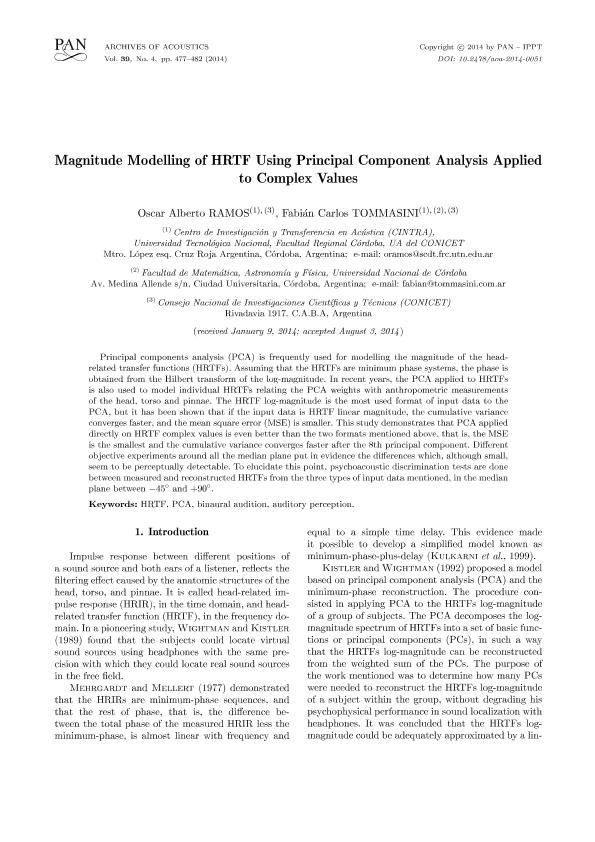Artículo
Magnitude modelling of HRTF using principal component analysis applied to complex values
Fecha de publicación:
12/2014
Editorial:
Polish Acad Sciences Inst Fundamental Technological Research
Revista:
Archives Of Acoustics
ISSN:
0137-5075
Idioma:
Inglés
Tipo de recurso:
Artículo publicado
Clasificación temática:
Resumen
Principal components analysis (PCA) is frequently used for modelling the magnitude of the headrelated transfer functions (HRTFs). Assuming that the HRTFs are minimum phase systems, the phase is obtained from the Hilbert transform of the log-magnitude. In recent years, the PCA applied to HRTFs is also used to model individual HRTFs relating the PCA weights with anthropometric measurements of the head, torso and pinnae. The HRTF log-magnitude is the most used format of input data to the PCA, but it has been shown that if the input data is HRTF linear magnitude, the cumulative variance converges faster, and the mean square error (MSE) is smaller. This study demonstrates that PCA applied directly on HRTF complex values is even better than the two formats mentioned above, that is, the MSE is the smallest and the cumulative variance converges faster after the 8th principal component. Different objective experiments around all the median plane put in evidence the differences which, although small, seem to be perceptually detectable. To elucidate this point, psychoacoustic discrimination tests are done between measured and reconstructed HRTFs from the three types of input data mentioned, in the median plane between −45◦ and +90◦ .
Palabras clave:
HRTF
,
PCA
,
BINAURAL AUDITION
,
AUDITORY AUDITION
Archivos asociados
Licencia
Identificadores
Colecciones
Articulos(CCT - CORDOBA)
Articulos de CTRO.CIENTIFICO TECNOL.CONICET - CORDOBA
Articulos de CTRO.CIENTIFICO TECNOL.CONICET - CORDOBA
Citación
Ramos, Oscar Alberto; Tommasini, Fabián Carlos; Magnitude modelling of HRTF using principal component analysis applied to complex values; Polish Acad Sciences Inst Fundamental Technological Research; Archives Of Acoustics; 39; 4; 12-2014; 477-482
Compartir
Altmétricas




